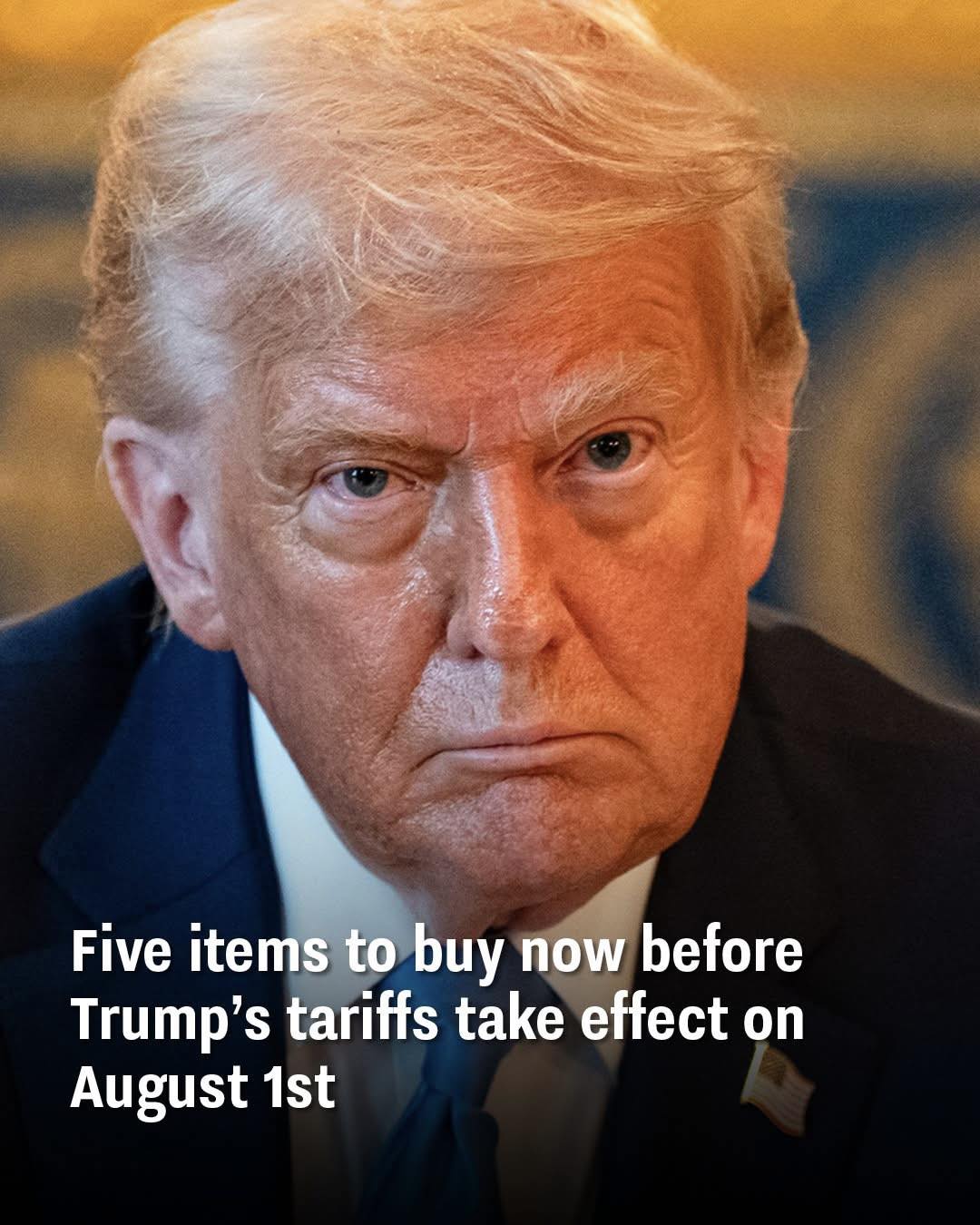A new round of tariffs introduced by President Donald Trump is set to take effect on August 1, triggering concerns across markets and households alike. Economists warn that these sweeping trade measures — aimed at bolstering U.S. manufacturing — could result in higher prices on everyday goods ranging from technology to textiles.
The tariffs were originally announced earlier this year as part of Trump’s so-called “Liberation Day” trade initiative, a move he claimed would free the U.S. from “unfair dependence on foreign markets.” Though praised by some industrial advocates, the policy has caused volatility in the stock market and raised concerns among consumers and retailers.
As the deadline nears, experts suggest that Americans may want to buy certain products now before the price hikes take effect. A recent report by Forbes highlights five key categories that are likely to be affected the most.
1. Technology
If you’re in the market for a new smartphone, laptop, television, or printer, now is the time to buy. While some tech companies have yet to confirm price adjustments, supply chain analysts say imported electronics will almost certainly feel the impact of the tariffs. With most of these products built or assembled overseas, especially in Asia, prices may climb steeply come August.
2. Furniture
Roughly 75% of furniture sold in the United States is manufactured abroad, according to the Alliance for American Manufacturing. This means everything from sofas and dining tables to bookshelves and office desks could see price increases. Retailers are already warning customers that future stock may carry higher tags due to added import costs.
3. Textiles and Apparel
Clothing and textile items — including shoes, towels, men’s shorts, and handbags — are produced in countries that now face steeper tariffs. For households trying to stay on budget, these added costs could make even routine purchases more expensive. Retailers may be forced to pass these additional costs onto consumers.
4. Food
Perhaps the most concerning impact may be on food prices, especially for imported staples and specialty items. While the U.S. grows much of its produce and meat domestically, many packaged goods, seafood, spices, and out-of-season fruitscome from abroad. Consumers may notice price increases at supermarkets in the coming months.
5. Home Essentials
Items like lighting fixtures, cookware, and basic decor are also expected to cost more due to tariffs. These everyday home essentials are often imported at scale, meaning prices will likely rise not just in luxury goods but in common household products as well.
The Bigger Picture
President Trump has defended the tariffs as a necessary step toward achieving fair trade and boosting domestic jobs. However, critics say the costs may fall disproportionately on working- and middle-class consumers.
The administration has since signed new bilateral trade agreements with countries like the United Kingdom, but many of the tariffs will still apply to products from China, India, Mexico, and the European Union.
White House officials argue that short-term price increases are worth the long-term gains, insisting that U.S. manufacturing will be stronger and more self-sufficient in the future.
But with August 1st rapidly approaching, consumers who want to save money are advised to act quickly.
Bottom Line:
If you’re planning to upgrade your electronics, redecorate your home, or stock up on essentials — it may be smarter and cheaper to do it before the tariffs roll in.
